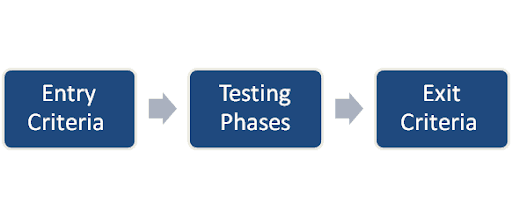Manual Testing Explained
by Webomates Inc Test Automation CompanyManual Testing is the process of confirming that the manufactured product is the quality product and to assure that the manufactured product is working according to the specifications or not.
The deviation from expected behavior and the desired result is considered as Defects.
What is the role of Manual Testing?
Manual testing is the process of executing and running test cases or exploring the application to find any deviation from existing behavior without the help of any tool.
Manual Testing is the most ancient and important type of testing and helps find bugs in the software system. Any new application must be manually tested before it can be automated with the help of any tool. Manual Testing requires more effort but is necessary to check automation feasibility.

Each of the above stages has a definite Entry and Exit criteria and Activities & Deliverables associated with it.
What is Entry and Exit Criteria?
Entry Criteria: Entry Criteria gives the prerequisite items that must be completed before testing can begin.
Exit Criteria: Exit Criteria defines the items that must be completed before testing can be concluded.

Requirement Analysis:- It is the first phase of STLC and it starts as soon as the SRS is shared with the testing team and In this phase, we analyze functional or non-functional requirement of Application under Test. Requirement Traceability Matrix is the output of this phase. Below are some activities that are performed under this phase:
- Extracting Requirement from Customer
- Analysis and determining any unclear and ambiguous requirement
- Requirement documentation in form of Use cases
- Defining the scope of testing
- Preparing Requirement Traceability Matrix
Test Case Design: – Once we have the Traceability matrix, the next step will be to transform these business or functional requirement into use cases. This phase involves the creation, verification, and modification of test cases & test scripts. Test Cases is the output of this phase.
Implementation and Execution: – During this phase, the testers test case execution will be carried out on the basis of test plans and the test cases prepared. Bugs will be reported back to the development team for correction and retesting will be performed. Execution Status and the Bug report is the outcome of this phase.
Exit Criteria and Reporting:- This STLC phase concentrates on the exit criteria and reporting. There are different types of reports ( DSR – Daily status report, WSR – Weekly status reports), depending on your project workflow and stakeholders choice, you can decide on reporting whether you want to send out a daily report of weekly report etc.
Test Closure Activities:- This phase include the following activities:-
– This phase includes verification of completion of the test. Whether all the test cases are executed or mitigated deliberately. There should not be any High Severity and Priority defects in the open state.
– Document creation for any new finding from the whole cycle or any lesson learned from meetings. It Includes what went well and where are the scope of improvements and what can be improved.
Types testing performed Manually:-
- Black Box Testing
Black-box testing is a technique of software testing that validates the behavior of an application based on business and functional requirements. It is also known as requirement-based, opaque-box, eye-to-eye testing or closed-box. In this technique, tester tries to analyses the functionality of Application under test without knowing much about the internal architecture of the application. Manual Intervention is required in Black box testing to create and execute boundary value and Edge cases from the user perspective. Read for more : Manual Testing
Webomates CQ, a tool by Webomates is used for performing regression testing for all the domains. Request a demo today.
Sponsor Ads
Created on Jan 10th 2022 02:44. Viewed 259 times.



